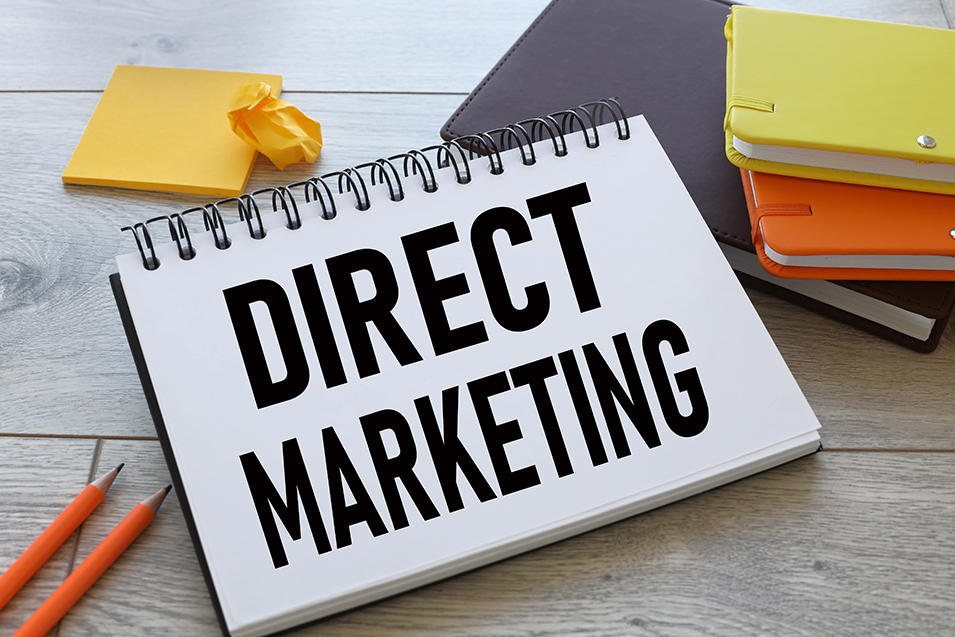
Marketing Focus – Direct Marketing
Direct marketing took off in the 19th century, when brands started sending information about their products to people’s homes. Catalogues were a highly popular form of marketing, as were flyers. This fell out of fashion as our letterboxes bulged with leaflets, menus and catalogues, but there’s been a bit of a resurgence of direct mail in recent times. New generations are getting into direct mail and a recent report showed that 63% of Gen Z are more excited about direct mail now than they were a year ago.
However, thanks to technology, direct marketing is so much more than direct mail and is a seriously powerful tool to encourage your target customer to take action. Now we have email marketing, social media advertising and targeted online ads in our direct marketing toolbox and they are a great way to generate new customers.
In this article, we’re going to be answering your questions about direct marketing and why we think it’s something all businesses should be using.
What is Direct Marketing?
According to Investopedia, “Direct marketing consists of any marketing that relies on direct communication or distribution to individual consumers, rather than through a third party such as mass media. Mail, email, social media, and texting campaigns are among the delivery systems used. It is called direct marketing because it generally eliminates the middleman, such as advertising media.”
Think about targeting the right clients for you and then giving them a direct method to respond to you!
Why is it important?
Direct marketing is smart marketing which is trying to elicit a response from your target market, be it filling in a form, registering for a competition or buying a product as part of a special offer.
Its key elements are:
Targeting – correctly identifying your target market and then finding a way to reach them through buying databases, sending direct mail to specific postcodes, advertising in targeted publications, or piggy-backing appropriate communication methods such as email newsletters.
Social media and online technology have given us incredible targeting options, that marketers would not have been able to even dream of years ago.
You can target a post or an ad to micro details, choosing where people live, their age, gender and interests to make sure you are reaching people who will really benefit from your product or service. With LinkedIn you can target by job roles or industry types as well as locations, so you have amazing opportunities to target your messaging to the right people only.
With online targeting in general, you can ensure your ads are only shown to people whose behaviour online shows as interested in the types of products or services you have, so they are already primed to want to buy, and are further down the buyer journey.
Control – This is a highly measurable medium as there is a clear call-to-action. This can enable testing of copy, artwork and offers with control groups to improve responses and you should be monitoring your ROI on each campaign.
Continuity – Don’t forget about people once they have contacted you or become a client, direct marketing is perfect for communicating with your database and encouraging further purchases.
Can it work for you?
I believe that direct marketing is the best method for small companies with a limited budget as it is the most focused form of marketing which concentrates heavily on results. So think about ways to make your communication more direct.
If you’re advertising it should be in the right place or media to reach your target market and the ad should have a very strong call-to-action to maximise the impact from your spend.
Leaflets should have reference codes, coupons or offers on them which require the customer to bring the leaflet into you so you can monitor just how well it’s working.
Emails should lead back to your website or social media channels and encourage people to do something – either to register for something, download something, interact with something, or to buy.
For a small business, marketing should not just be about awareness building, everything you do should try to elicit a response. That response could be a “follow” on social media, signing up to a free programme, downloading a guide, or to take advantage of a special offer. It doesn’t always have to be making a purchase, but that of course is the ultimate goal.
Use WhatsApp
Where we once used telemarketing, now WhatsApp is a great alternative for both sending messages and calling. As of October 2022 it had 2 billion users, and was in third place in the top 17 most popular social networks, behind Facebook and YouTube.
In Spain in 2021, WhatsApp was by far the most used and favourite social media platform. More than 91 percent of the country’s internet users used the instant messaging app, while networks like Facebook was used by 73% and Instagram by 71% of online audiences.
It is a good medium for maintaining contact with leads during their buying journey and keeping them warm, especially for high ticket items with a longer buying journey.
There’s so much scope with what you can do with WhatsApp. From creating target groups interested in the same things to send alerts, to follow up on web leads in a more casual way, or even sending pictures and building a rapport. It’s easy to click through from messages to social media, websites, guides and articles and you can call people if they are happy to speak. There are also automated options on WhatsApp Business API. This makes it the best direct marketing tool!
What are the pitfalls?
Be aware that data protection regulations are strongly enforced in Spain and the UK. If you are building a database through networking, logging enquiries and researching the market you should work on the opt-in rule – email them to let them know you’d like to include them on your mailing list and only include those which agree to their inclusion. Always include an opt-out facility on every email you send and use a mailing programme which takes the data automatically off your list if someone does opt out so you don’t bother them.
If you’re new to Spain, or don’t speak the language, make sure you know the rules and that you comply. Also take very good care of your data and never sell or give data to other companies. If you comply with these simple rules, you’ll keep your contacts and the regulators happy.
Direct Marketing is highly developed in the UK with companies selling high quality, highly segmented data for this purpose. Unfortunately for businesses on the Costa del Sol, there is a lack of quality data available so it is often better to piggy-back a relevant website’s newsletter for example than try to buy a database of your own.
Don’t overuse your database – Once you have built a database of your own through marketing beware of contacting them too often as they’ll get annoyed and opt-out. Contact should be made regularly where appropriate and only if you have something interesting to say to your audience. There are no hard and fast rules regarding frequency, if you’re not sure why not ask them by using a survey? At least then they’ll feel involved!
How can we help?
Shaw Marketing Service can help you with direct marketing through social media advertising, leaflets and emails. We can advise you on strategy, produce the materials, manage the send and monitor the results. If you’d like to have a free consultation on direct marketing, please get in touch


